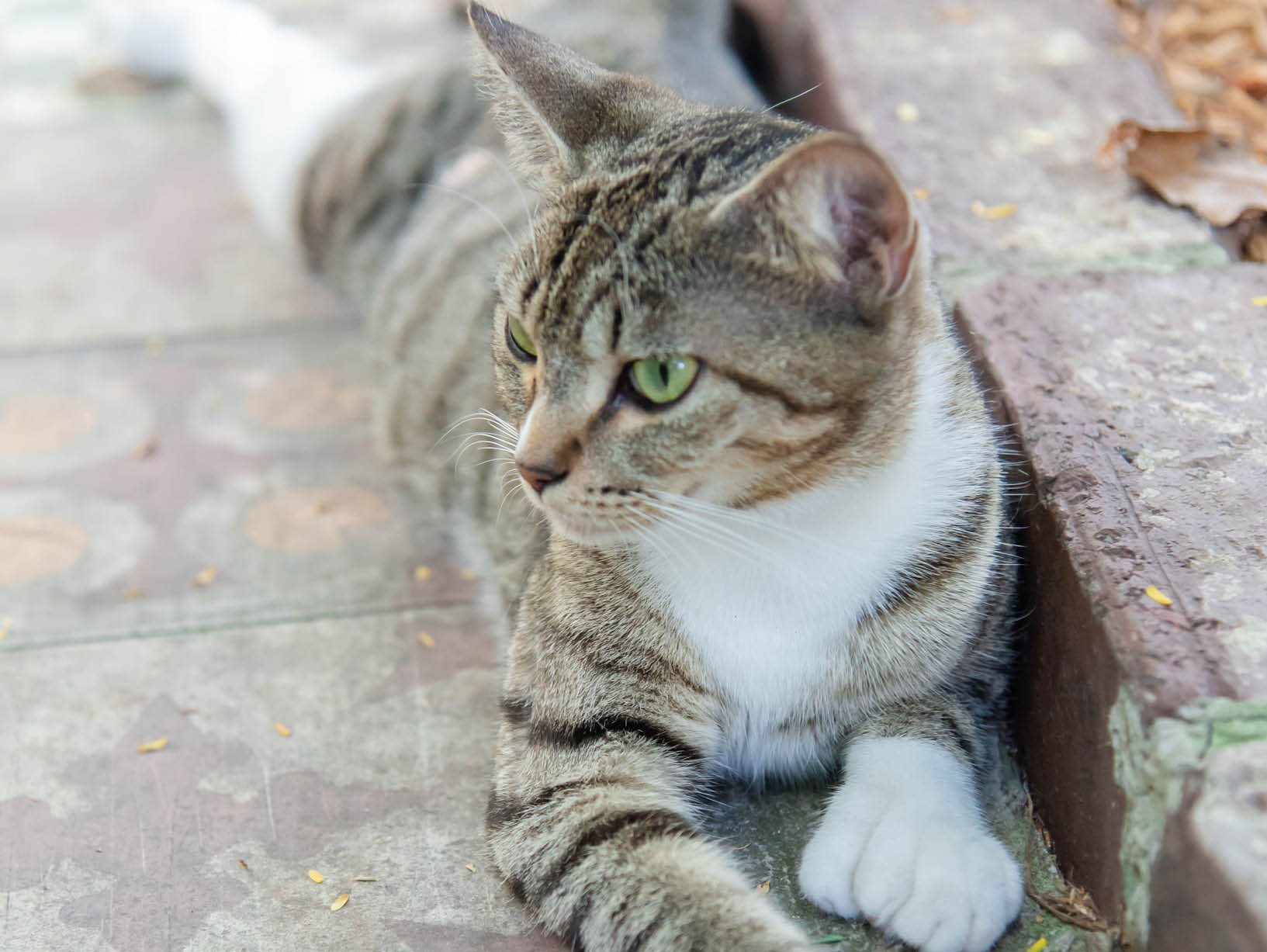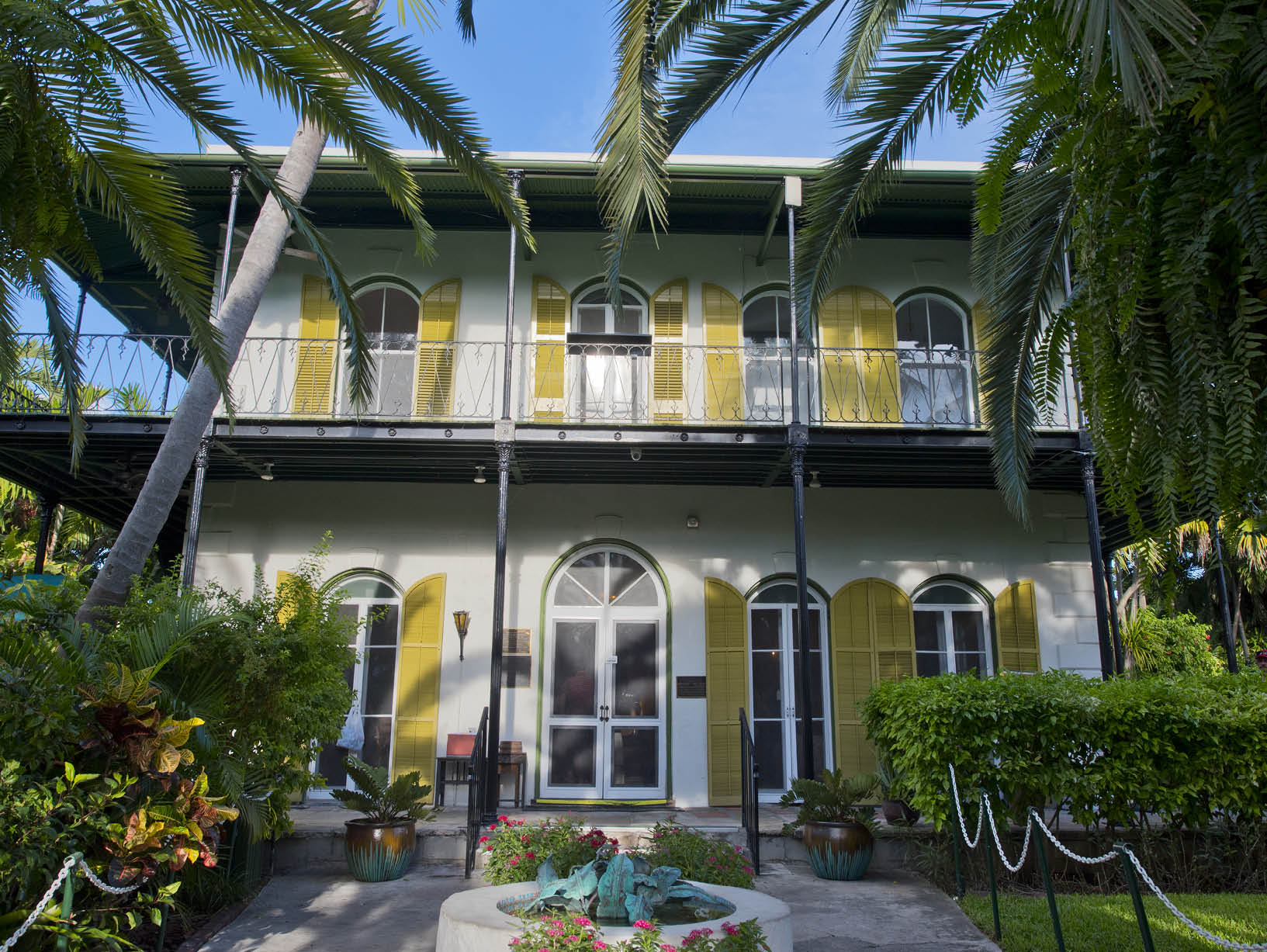Papa’s Paradise Home
Key West, Florida, is world-renowned for many things, including its vast coral reefs, its plentiful opportunities for fishing and snorkeling, its food (key lime pie, anyone?), its claim as the southernmost point of the continental United States, and its history.

One well-known part of this history is that Ernest Hemingway called this island home. From 1931 to 1940, one of America’s greatest writers resided at 907 Whitehead Street, where he penned such classics as “The Short Happy Life of Francis Macomber,” The Snows of Kilimanjaro, To Have and Have Not, and Islands in the Stream.
Today, this house, now known as the Hemingway Home and Museum, keeps Papa Hemingway’s legacy alive for literature and history lovers alike. But, as you can tell from the meowing and purring that echo in the rooms of this iconic residence, its four-legged inhabitants also add to the mystique.
A History Of Hemingway’s Home
Although Hemingway first came to Key West in 1928, he and his wife Pauline didn’t immediately move into this home. Instead, they rented housing elsewhere until 1931, when Pauline convinced a relative to gift the then dilapidated house to them as a belated wedding present.
Over the next several years, the Hemingways restored the 1851 Spanish Colonial abode while adding their own personal touches. The most notable of these are a pool—the first ever in Key West—that Pauline paid $20,000 (the equivalent of over $372,000 today) to have built and Ernest’s writing studio on the second floor of the guest house.

Though the couple eventually divorced in 1940, Pauline lived in the home until she passed away in 1951. When Ernest died a decade later, his sons auctioned it off to a private resident. The home became a museum in 1964 and was named a National Historic Landmark four years later.
And then there are the cats. Legend has it that Hemingway was given a polydactyl, or six-toed, cat here by a visiting sea captain. The white feline, named Snow White, is thought to be the originator of the line of cats that have lived on the grounds ever since. Today, upward of sixty of them— around half of which have six-toed paws—call this place home, and many are named for celebrities, a tradition Hemingway himself began.
Taking In This Treasure
The Hemingway Home and Museum is open 365 days a year to visitors, and it remains Key West’s most popular attraction. When you go, be sure to tour both the estate and its grounds. You can explore the house and revel in its history on your own or do a guided tour, which lasts approximately thirty minutes.

Whichever you choose, your unofficial hosts, the dozens of cats you’ll encounter, will be sure to welcome you. And why wouldn’t they? As a big part of the home’s family, they’re fed and well cared for, getting vet checkups and treatments. They’re so beloved, several employees of the Hemingway Home and Museum even chose to stay and ride out Hurricane Irma with their fourlegged friends in 2017.
Outside, you’ll experience the lavish, colorful greenery of the gardens and can take in the opulent 80,000-gallon pool that was built over eighty years ago. (You can also see where the home’s previous cats are buried and memorialized.) The entire experience is so enchanting, the Hemingway Home and Museum is a popular locale for weddings.
Your walk through history doesn’t need to end once you’ve visited the house, though. You’ll find the Key West Lighthouse, three years older than Hemingway’s home, right across the street. You can also trace Hemingway’s footsteps to Sloppy Joe’s, a bar he frequented (and helped name) during his time in Key West, which is a mere fifteen-minute walk away on iconic Duval Street.
Ernest Hemingway was renowned for his life of adventure, which is reflected in his vast body of work and the places he called home. Have your own adventure by visiting this gem of a museum where Hemingway’s history comes alive.
For more info, visit hemingwayhome.com






















